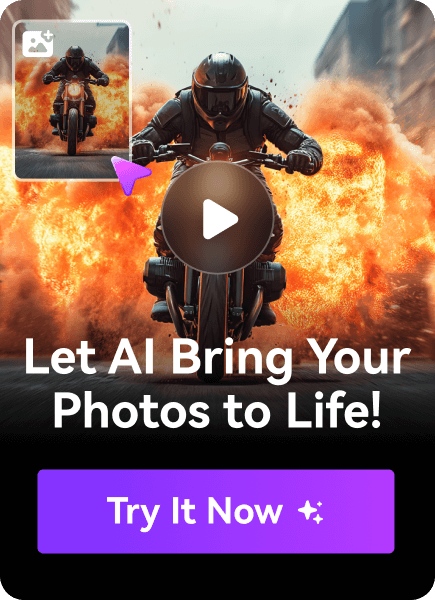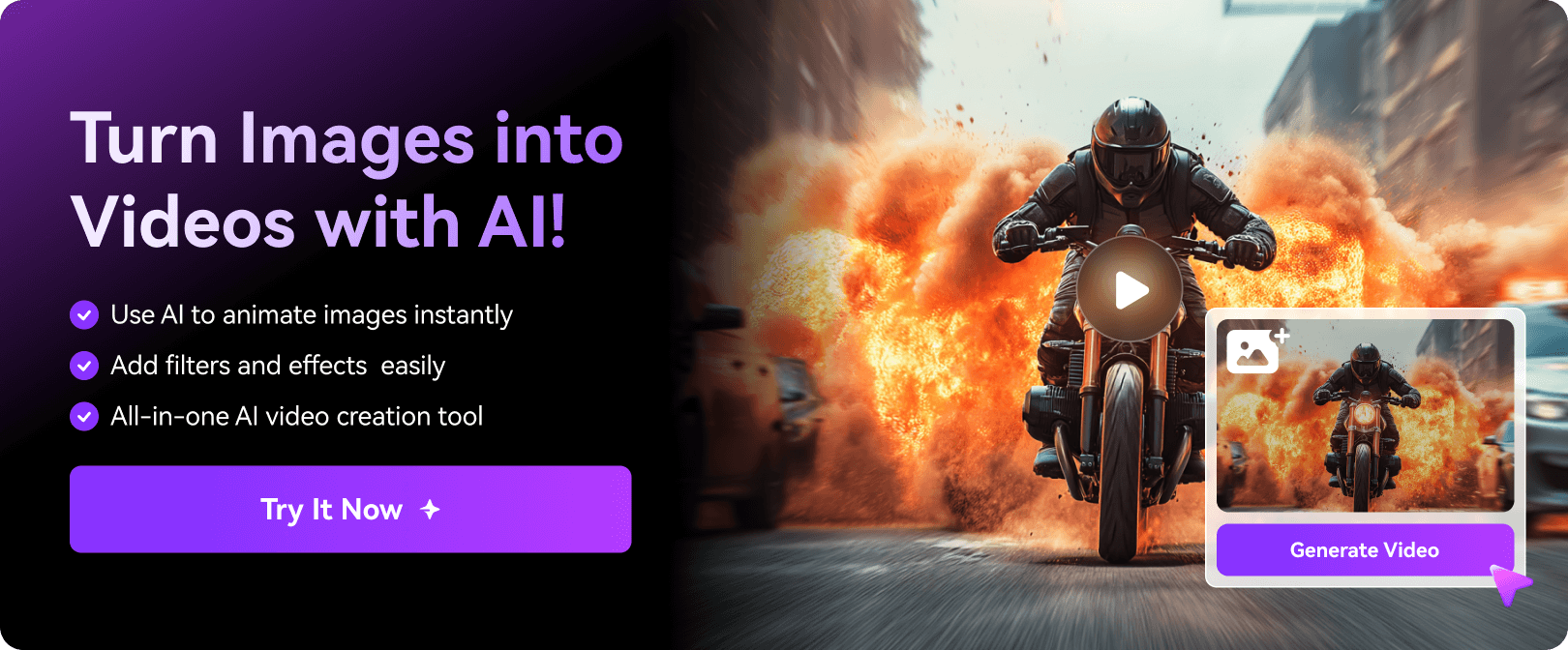A creative strategy is the foundation for crafting impactful marketing and advertising campaigns. It serves as a blueprint that aligns creative efforts with a brand's business objectives, ensuring consistency and relevance. By defining a clear direction for messaging and visuals, a creative strategy helps brands connect emotionally with their audience. It plays a critical role in diverse applications such as ad campaigns, product launches, and branding efforts. When executed effectively, it bridges the gap between creativity and business goals, fostering memorable and results-driven campaigns. This approach ensures that every creative output delivers measurable value, aligning with the ever-changing demands of the market.
In this article
- The Building Blocks of a Unique Creative Strategy
- Unconventional Creative Strategies Examples That Worked
- Why Experimentation Matters in Creative Strategy
- Crafting Multi-Layered Campaigns for Maximum Impact
- How Virbo Transforms Creative Strategy in Advertising
- The Roadmap to Crafting a Creative Strategy in Advertising
Part 1. What is Creative Strategy?
A creative strategy serves as the blueprint for crafting impactful advertising and marketing campaigns. But what is creative strategy exactly? It’s a structured approach that combines creativity and strategic planning to deliver messages that resonate with your target audience. In advertising, a creative strategy in advertising defines the tone, visuals, and messaging to make campaigns successful. By exploring creative strategy examples, you’ll see how a well-crafted strategy drives results. To build one effectively, a creative strategy should contain key elements like audience insights, goals, and unique selling propositions, ensuring every campaign is both innovative and purpose-driven.

Part 2. The Building Blocks of a Unique Creative Strategy
A creative strategy is the foundation of successful marketing and advertising efforts, helping brands align their creativity with business goals. By focusing on storytelling, innovation, and data-driven insights, brands can craft campaigns that resonate with their audiences. A strong creative strategy in advertising ensures that every campaign element works cohesively to deliver a memorable message. By understanding these building blocks, businesses can develop strategies that stand out and create meaningful connections with their target market.
Key Building Blocks
- Creative Ideation: This involves brainstorming innovative ideas that reflect the brand's values and resonate deeply with the target audience. It's about turning bold concepts into actionable strategies that differentiate the brand.
- Storytelling: Successful campaigns rely on compelling narratives to build emotional connections with audiences. A well-crafted story makes a brand memorable and helps foster trust and loyalty.
- Tech-Driven Insights: Leveraging analytics tools and data helps refine creative strategies. These insights ensure that campaigns are not only innovative but also relevant and impactful for the audience.
- Audience-Centric Approach: Understanding the audience's needs, preferences, and behaviors is crucial. Tailoring campaigns to their expectations enhances engagement and ensures better campaign performance.
- Clear Objectives: Defining measurable goals provides a roadmap for creative efforts. Clear objectives ensure alignment with business outcomes and help evaluate a campaign's success.
Part 3. Unconventional Creative Strategies Examples That Worked
Creative strategy examples demonstrate how innovative approaches can transform advertising campaigns into memorable experiences. By understanding what a creative strategy should contain, brands can design impactful campaigns that resonate with audiences. A creative strategy in advertising is essential for capturing attention, fostering engagement, and driving meaningful connections with consumers.
1. User-Generated Content (UGC):
Empowering audiences to become co-creators can drive engagement and loyalty. For instance, Starbucks invited customers to design holiday cups, resulting in a wave of creative submissions and increased brand interaction.

2. Experiential Campaigns:
Crafting in-person experiences helps create a strong emotional bond with the brand. IKEA’s sleepover event allowed customers to experience their products in a fun and unique setting, leaving a lasting impression.

3. Personalized Advertising:
Reaching individuals with tailored content enhances relevance and connection. Spotify’s “Wrapped” campaign provided users with personalized summaries of their music preferences, creating viral moments and deepening customer loyalty.

4. Interactive Digital Campaigns:
Gamified content or interactive ads encourage active participation from audiences. Burger King's "Whopper Detour" campaign offered discounts to app users ordering near a McDonald's, blending humor with clever digital engagement.

5. Sustainability-Focused Marketing:
Aligning campaigns with eco-conscious values resonates with socially conscious audiences. Patagonia’s “Don’t Buy This Jacket” campaign urged consumers to think critically about overconsumption while highlighting the brand's commitment to sustainability.

Part 4. Why Experimentation Matters in Creative Strategy
Experimentation is essential in crafting a creative strategy that truly resonates with your audience. By testing unconventional ideas, brands can explore new territories while minimizing risks. Pilot campaigns offer a low-stakes way to introduce innovative concepts, enabling brands to gauge audience reactions and refine their approach. This iterative creativity—launching, learning, and refining campaigns based on real-time feedback—ensures that strategies remain dynamic and responsive.
For example, Nike’s “Breaking2” project, which aimed to break the two-hour marathon barrier, showcased the power of experimentation. While the attempt fell short, the campaign's compelling storytelling and bold ambition inspired millions, solidifying Nike’s reputation as a leader in innovation and performance. This case demonstrates that even when results deviate from initial goals, experimental strategies can drive engagement, enhance brand awareness, and leave a lasting impact.
Part 5. Crafting Multi-Layered Campaigns for Maximum Impact
A creative strategy in advertising is most effective when it integrates multiple layers, addressing aspects like emotional appeal and platform-specific tactics. These layers form the backbone of successful campaigns and ensure alignment with business goals. By incorporating data-driven adjustments, brands can refine their strategies for greater impact. The success of creative strategy examples lies in adapting these layers to meet audience needs across various touchpoints.
Layer 1Emotional Appeal
Making audiences care about your brand is crucial for creating a lasting connection. Emotional appeals can drive stronger reactions and motivate consumers to act. For example, brands like Coca-Cola tap into emotions with campaigns centered around happiness and togetherness. The emotional bond you build can make all the difference in shaping how audiences perceive and engage with your brand.
Layer 2Platform-Specific Strategies
Each platform offers unique opportunities to tailor your message. Whether it’s Instagram, TikTok, or YouTube, understanding the platform’s strengths is key to engaging with audiences in the right way. For instance, short-form, playful videos thrive on TikTok, while YouTube requires longer, more informative content. Crafting your creative strategy around platform strengths ensures your content feels native and resonates with users.
Layer 3Data-Driven Adjustments
No creative strategy is complete without continual refinement based on data insights. Using analytics to track performance helps brands optimize their efforts. For example, if a campaign on Instagram isn’t driving conversions, you might adjust the visual elements or target a different audience. By making data-driven adjustments, you ensure that your creative strategy in advertising remains relevant and effective in meeting your goals.
Part 6. How Virbo Transforms Creative Strategy in Advertising
Virbo offers an innovative approach to crafting impactful advertising campaigns by utilizing AI-powered tools for video creation and virtual influencers. With features like the AI Montage Maker for dynamic video production and URL to Video for transforming web pages into engaging video content, Virbo bridges creativity and technology. It empowers businesses to craft tailored campaigns that resonate with audiences while ensuring consistency in branding across multiple platforms.

Start Online For Free
Key Features of Virbo:
- AI-Powered Avatars: Create and customize virtual influencers with personalized appearances and voices, aligning them with your brand identity.
- Consistency Across Campaigns: Ensure your brand’s message remains unified and clear by using the same avatar across multiple marketing efforts.
- Personalized Engagement: Design avatars that interact with customers through tailored dialogue and actions, enhancing customer relationships.
- Virtual Product Demos: Use virtual influencers for dynamic product demonstrations, offering a fresh way to present your products to audiences.
- Interactive Ads: Craft interactive advertisements with gamified or personalized elements that boost engagement and make your ads more memorable.
Step-by-Step Guide to Using Video Ads Maker for Creative Strategy in Advertising
Step1Upload Product Details and Set Parameters
Open the Virbo Video Ads Maker and upload an image of your product. Ensure the image is clear and free from distractions to maximize focus on the product itself. Configure essential parameters such as generation mode, video duration, and preferred language to align the video with your advertising goals. If needed, explore Virbo’s gallery of templates to find styles that suit your campaign, then click Next to move forward.

Start Online For Free
Step2Customize and Generate Your Video
Virbo’s AI analyzes the uploaded material and generates a draft video with key details, including the product name, highlights, and a storyboard. Review these auto-generated elements and refine them to align with your creative vision. Adjust visuals, enhance text, and tailor the narrative to resonate with your audience. Once satisfied with the edits, click Generate Video to finalize the ad, creating a polished draft ready for deployment.

Step3Optimize and Finalize the Video
Preview the generated video to ensure it meets your creative expectations. If further edits are required, Virbo’s advanced editor enables adjustments to scenes, the addition of virtual influencers, or the inclusion of text overlays. Customize the video ratio to optimize it for various platforms and refine the timeline to enhance visual flow. Once complete, export the video in your preferred format and deploy it across channels such as social media, email campaigns, or product pages for maximum impact.

Part 7. The Roadmap to Crafting a Creative Strategy in Advertising
Creating a creative strategy in advertising is essential for ensuring that marketing efforts are impactful and aligned with business objectives. A strategic roadmap helps guide the process, ensuring that every step contributes to a cohesive and successful campaign. By following a clear, step-by-step approach, you can develop strategies that are effective, innovative, and adaptable, with the right tools to bring your vision to life.
Step 1: Define Clear Objectives and Target Audiences
Establish clear, measurable goals to guide your campaign. Understanding your target audience will help tailor your content to their preferences and increase engagement. By defining the right objectives, you can create campaigns that resonate with your audience and align with overall business goals.
Step 2: Brainstorm Innovative Ideas and Narratives
Encourage creative thinking to develop fresh ideas that connect emotionally with your audience. Craft compelling stories that convey your brand’s message and create lasting impressions. Focus on narratives that are authentic and relevant to your audience’s interests.
Step 3: Create a Robust Strategy Document
Compile your ideas and goals into a strategy document that outlines specific deliverables and timelines. This document ensures your team is aligned and allows for easier tracking of progress. A clear plan will also help in maintaining consistency throughout the campaign.
Step 4: Utilize Platforms and Tools for Execution
Leverage advanced tools like Virbo to bring your creative strategy to life. Virbo’s AI-powered virtual influencer technology helps create personalized, engaging content that aligns with your strategy, making execution smoother and more impactful.
Step 5: Continuously Measure and Refine
Track the performance of your campaign through key performance indicators (KPIs). Use the data to refine your approach, adjusting content and tactics based on real-time feedback. Iterative improvements will ensure your campaign stays relevant and effective.
Conclusion
Marketers need to think beyond traditional approaches and explore creative strategies that embrace innovation. By incorporating new-age tools like Virbo, brands can transform their creative strategy in advertising into something more engaging and personalized. These AI-powered solutions allow brands to create dynamic, memorable campaigns with ease. Using the right creative strategy examples can guide brands to experiment and push boundaries. It’s essential to adapt strategies to continuously meet evolving market demands, ensuring campaigns stay impactful and aligned with brand goals.
Start Online For Free
FAQs
-
What is a creative strategy in advertising?
A creative strategy in advertising refers to the overall plan that guides the creation of ads and campaigns to effectively communicate a brand’s message to the target audience. It involves aligning creative ideas with business objectives.
-
Why is storytelling important in a creative strategy?
Storytelling helps create an emotional connection with the audience, making the campaign more engaging and memorable. It aligns the brand’s message with consumer emotions, driving more powerful responses.
-
How can AI tools like Virbo enhance a creative strategy?
AI tools like Virbo can assist by creating virtual influencers and avatars that bring a brand's personality to life. These tools allow for tailored, innovative campaigns that stay true to the brand's identity and connect with modern audiences.
-
What are some examples of successful creative strategies?
Examples of successful creative strategy in advertising include Starbucks' customer-designed holiday cups and Burger King's "Whopper Detour" campaign. These strategies involved customer interaction and innovative engagement.
-
What key elements should a creative strategy contain?
A creative strategy should contain clear objectives, an understanding of the audience, innovative ideas, and data-driven insights to adapt the strategy over time for the most effective campaign results.



